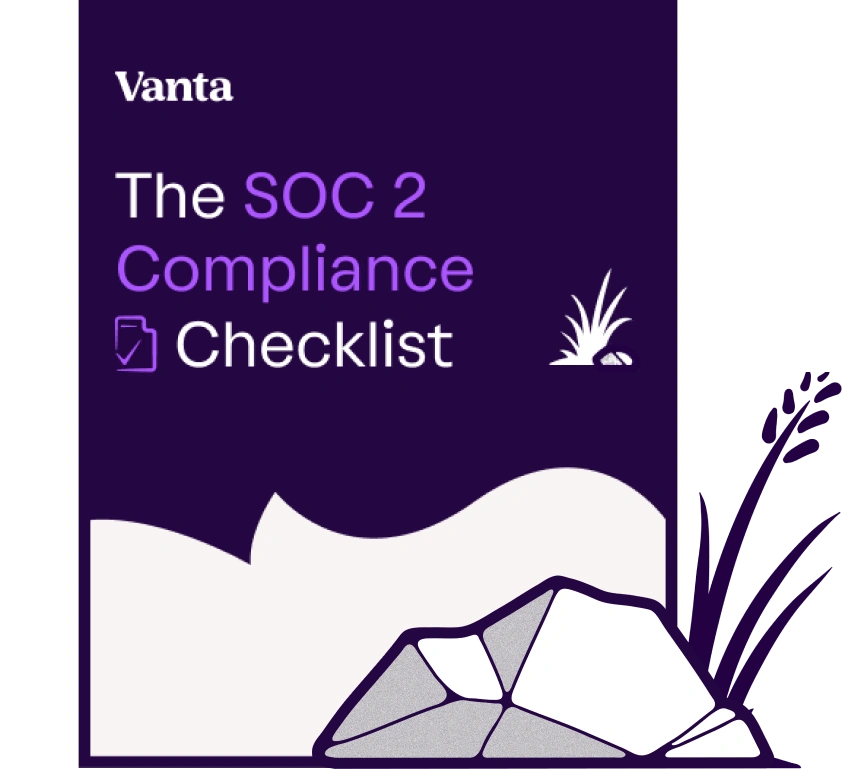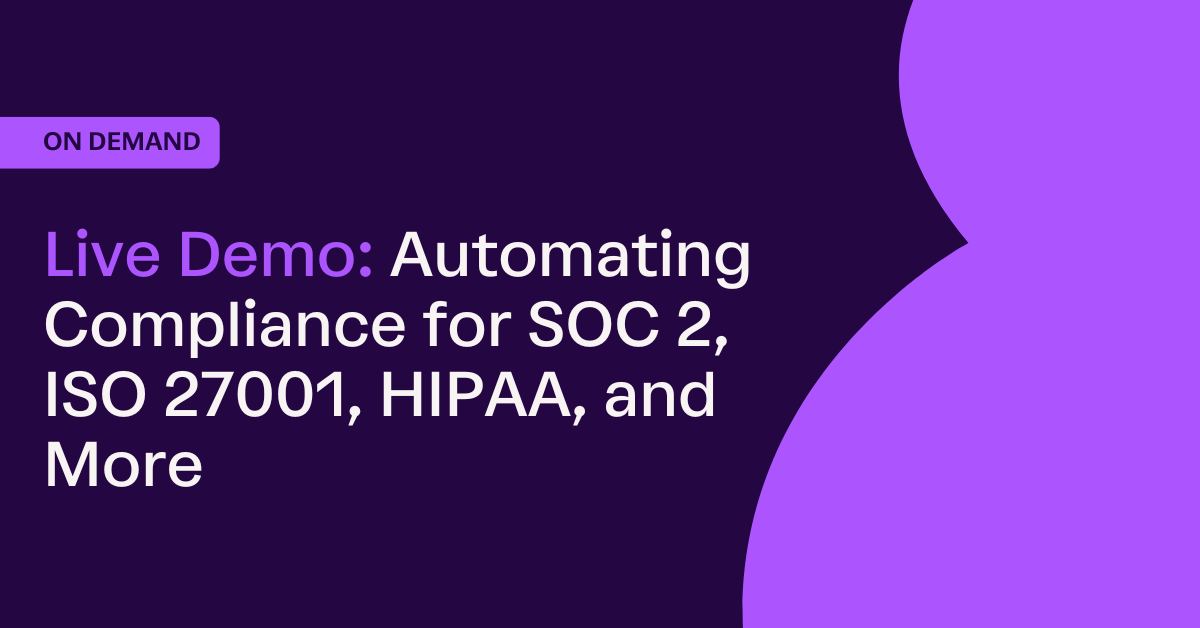Share this article

The roles of PCI DSS and HIPAA compliance
Accelerating security solutions for small businesses Tagore offers strategic services to small businesses. | A partnership that can scale Tagore prioritized finding a managed compliance partner with an established product, dedicated support team, and rapid release rate. | Standing out from competitors Tagore's partnership with Vanta enhances its strategic focus and deepens client value, creating differentiation in a competitive market. |
It’s wise for any business to do an audit of their security system and find out if there are any gaps leaving them vulnerable. This audit should also include determining if there are any security standards you should be compliant with. At first glance, every security standard may look similar, from SOC 2 to PCI, because they’re each designed to safeguard the data you’re taking in. But that doesn’t mean you can substitute one for another.
Let’s talk about two particularly critical security standards or regulations: PCI DSS and HIPAA. How are they similar, how are they different, and why would your organization need compliance for both of them?
Similarities between PCI and HIPAA
HIPAA stands for the Healthcare Insurance Portability and Accountability Act. PCI DSS stands for Payment Card Industry Data Security Standard. PCI and HIPAA have a lot in common, which makes it even more important to understand which one your business may need.
Their general purpose
PCI and HIPAA are both security regulations or standards designed to enhance your security. They both consist of controls and practices you need to implement to become compliant. What makes HIPAA and PCI unique is that they’re specifically built to protect users’ private information rather than all your data.
The parties they protect
One factor that varies among security standards is the party that benefits from them. Some security standards and reports, like SOC 2 and ISO 27001, are designed to protect your organization from a potentially costly data breach.
HIPAA and PCI, on the other hand, are designed for the benefit of your customers, patients, and/or clients. Each standard is designed to make you less vulnerable to data breaches and protect your organization’s clients and reputation.
{{cta_withimage13="/cta-blocks"}}
Differences between PCI and HIPAA
Complying with just PCI or HIPAA will not free you from needing to comply with the other. Let’s take a closer look at what makes each of these regulations stand out.
The information they protect
Both HIPAA and PCI were created to prevent the misuse of very specific types of data. PCI compliance is designed to secure your customers’ payment information like their credit card numbers. HIPAA, on the other hand, is meant to secure people’s private health information.
Organizations that should comply
Not every organization needs to comply with PCI and with HIPAA. In fact, each regulation applies to certain specified types of organizations.
PCI compliance is necessary for any organization that plays any role in a transaction, including processing, storing, or transferring payment information. This includes any ecommerce business as well as payment processing companies, cloud storage companies, and more. Being PCI compliant tells major credit card companies and banks that you’re a reliable organization.
HIPAA compliance, however, applies to select types of organizations that are listed in the legislation as “covered entities.” This includes healthcare providers, health insurance companies, HMOs, and certain other categories.
How they’re enforced
PCI is a standard that was created by and is enforced by the payment industry, including major leaders in the industry like Visa. Those leaders in the industry enforce PCI compliance by charging added fees to businesses that aren’t compliant, and in some cases, they may refuse to do business with you at all.
HIPAA is a legal regulation. It was passed into law in 1996, and it is actively enforced by the Department of Health and Human Safety’s Office of Civil Rights (or OCR). The OCR issues fines for HIPAA violations just as it would issue fines for breaking any other law.
How you verify compliance
The process for becoming compliant with PCI and HIPAA will be different, but so will the process for documenting your compliance.
For PCI compliance, there are specific steps you need to follow to receive a certification once you have met the requirements for compliance. Those steps depend on the number of transactions you handle each year. Most organizations will need to submit a self-assessment questionnaire to document their security controls, a vulnerability scan from an approved vendor, and an attestation of compliance. Large businesses will need an in-depth audit by a third-party auditor instead.
HIPAA is very different because it is a law and it is enforced like one. It is your responsibility to maintain HIPAA compliance and you will receive penalty fines if the OCR discovers that you are not fully compliant.
Why you need PCI and HIPAA compliance together
PCI and HIPAA are both important regulations meant to protect consumers from negligent or malicious organizations. If you process or handle digital transactions in any way, and if you’re categorized as a covered entity in HIPAA, it’s critical that you comply with both of these standards.
But there’s good news: compliance might not be as cumbersome as you expect. Not only is there some overlap between the two, but Vanta’s automated compliance tools can tell you exactly which requirements you’ve already met and which ones you still need to address for each regulation.
{{cta_withimage3="/cta-blocks"}}





FEATURED VANTA RESOURCE
The ultimate guide to scaling your compliance program
Learn how to scale, manage, and optimize alongside your business goals.













.png)





.png)





.svg)
.svg)
.png)
.png)
.png)